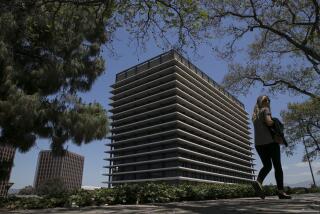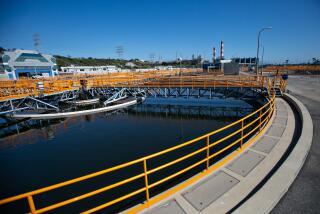Making L.A. water-wise
It’s getting more expensive to bring water to Los Angeles, and the reasons are many: The Sierra snowpack is below average again this year; the city has given up its claim to much of the Owens Valley snowmelt in order to reverse environmental damage; California Water Project supplies are diminished by both environmental needs and politics; and the Metropolitan Water District’s allocations of water are being cut.
It has been two months since Mayor Antonio Villaraigosa responded with a call for drought-year pricing that decreases by 15% the amount of water that ratepayers can buy at the lowest tier of rates each month. It’s a good plan. Frugal water users will remain unaffected, and of course will pay less if they use less. Guzzlers will hit the more expensive second tier sooner and, we hope, will take conservation measures more seriously after their first drought-year bill arrives in June.
But it won’t arrive in June if the City Council doesn’t move the process forward. The matter already has been to the Department of Water and Power’s board, is going there a second time today, and will return to the council for a second time later this week. Given the complexity of water rates and the DWP’s spotty record of justifying hikes, the council’s hesitation is understandable. But there has been plenty of time for scrutiny. The drought-year rates should be adopted as soon as possible.
The council also will consider, and should adopt, the next phase of water restrictions, which, among other things, ban use of landscape sprinklers except on Mondays and Thursdays. Much of the city’s waste is a result of over-watered lawns that would remain just as green with less watering.
The need to save water is real, and that message would be easier to deliver if the DWP were more consistent and more straightforward in its presentations to the council and to neighborhood groups. For example, a public notice in advance of today’s board meeting states that customers whose use remains within the new, smaller allocation will see their bills decrease. That’s not necessarily true; they have to use less if they want to pay less. Even that may not be enough; the whole city must decrease its use, or the DWP will be forced to buy water at much steeper rates from the Metropolitan Water District.
It would be nice if only the overusers picked up that higher tab, but without a further, and very time-consuming, overhaul of the city’s rates, those higher prices would be borne by everyone. The council should take up that challenge too, but for now, the drought-year rates and the watering restrictions are the city’s best opportunity to make sure that everyone retains the choice to save money by using less water.
More to Read
Sign up for Essential California
The most important California stories and recommendations in your inbox every morning.
You may occasionally receive promotional content from the Los Angeles Times.










